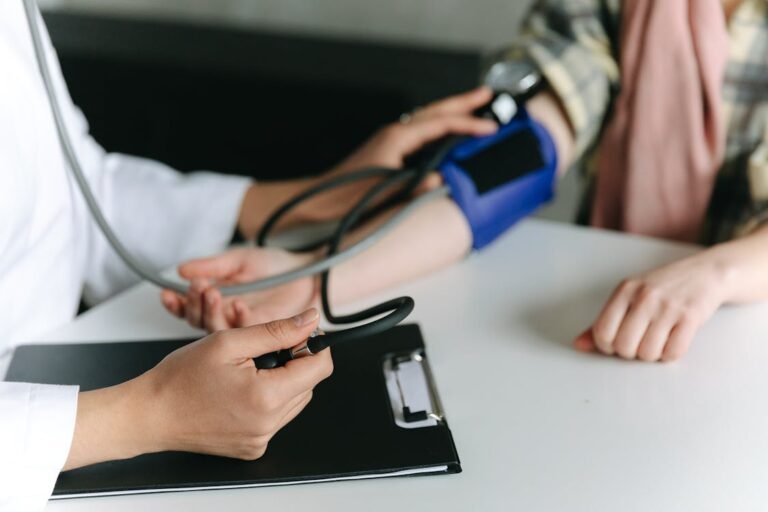Follow us and share.
High Blood Pressure: Complete Prevention Guide
The different degrees of high blood pressure allow us to identify specific risks and establish personalized treatment strategies to prevent serious complications.

High Blood Pressure: A Global Health Problem
The high blood pressure (HBP) It is one of the most prevalent medical conditions in the world. In this Complete Guide to High Blood Pressure, you'll learn its classification, health impact, and preventative measures. It currently affects millions of people and significantly increases the risk of cardiovascular disease, stroke, and other serious complications. The classification, based on systolic (SBP) and diastolic (DBP) blood pressure levels, is key to accurate diagnosis and effective treatment.
Classification of High Blood Pressure
Blood pressure is measured in millimeters of mercury (mmHg) and is presented in two values:
- PAS: Pressure when the heart pumps blood.
- PAD: Pressure when the heart is at rest between beats.
According to the most recent international guidelines (American College of Cardiology and European Society of Cardiology), high blood pressure is classified as:
- Normal Blood Pressure:
- PAS: Less than 120 mmHg.
- PAD: Less than 80 mmHg.
- Description: Optimal indicator of cardiovascular health. Maintaining healthy habits is recommended to prevent future disorders.
- High Blood Pressure (Prehypertension):
- PAS: 120-129 mmHg.
- PAD: Less than 80 mmHg.
- Description: It can be a warning of future cardiovascular problems if lifestyle changes are not made.
- Grade 1 (Mild) High Blood Pressure:
- PAS: 130-139 mmHg.
- PAD: 80-89 mmHg.
- Description: It requires close monitoring and, in some cases, medical treatment.
- Grade 2 (Moderate) High Blood Pressure:
- PAS: 140-159 mmHg.
- PAD: 90-99 mmHg.
- Description: Needs immediate medical intervention to prevent organ damage.
- Grade 3 (Severe) High Blood Pressure:
- PAS: Equal to or greater than 160 mmHg.
- PAD: Equal to or greater than 100 mmHg.
- Description: Associated with a high risk of serious complications such as heart attacks and strokes.
- Hypertensive Crisis:
- PAS: Greater than 180 mmHg.
- PAD: Greater than 120 mmHg.
- Description: Medical emergency that requires immediate attention to prevent damage to vital organs.
Special Considerations
- Isolated Systolic Hypertension:
- PAS: Greater than 140 mmHg with normal DBP.
- Frequent in: Older adults due to stiffness of the arteries.
- White Coat Hypertension:
- Description: Temporary elevation of blood pressure in a clinical setting due to anxiety.
- Masked Hypertension:
- Description: Normal blood pressure in the office but elevated outside the office.
Health Impact and Risk Factors
Uncontrolled blood pressure, which is part of the classification of hypertension, can lead to serious complications, such as:
- Cardiovascular diseases (myocardial infarction, heart failure).
- Strokes.
- Chronic kidney damage.
- Vision loss due to hypertensive retinopathy.
Main risk factors:
- Sedentary lifestyle.
- Diet high in sodium and fat.
- Excessive alcohol consumption and smoking.
- Chronic stress.
- Family history of hypertension.
Prevention and Management
Effective blood pressure control requires a combination of healthy habits and, in some cases, medication according to the hypertension classification.

Preventive measures:
- Healthy diet:
- Reduce your intake of salt and saturated fats.
- Increase your consumption of fruits, vegetables, and whole grains.
- Physical activity:
- Get at least 150 minutes of moderate exercise per week.
- Weight control:
- Maintain a body mass index (BMI) within healthy limits.
- Stress Management:
- Practice techniques such as mindfulness or meditation.
- Avoid harmful substances:
- Limit alcohol consumption and eliminate smoking.
Medical treatment:
- Includes antihypertensives such as diuretics, beta-blockers, or ACE inhibitors, as prescribed by your doctor.
Conclusion: The Importance of Diagnosis and Follow-up
High blood pressure is a global health problem that can be prevented and controlled with a comprehensive approach. Regular medical checkups, adopting a healthy lifestyle, and following prescribed treatment are essential steps to reduce risks and improve quality of life.
Remember: Prevention and early treatment are key to protecting your heart and your overall well-being.



